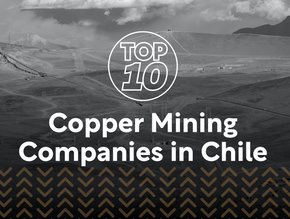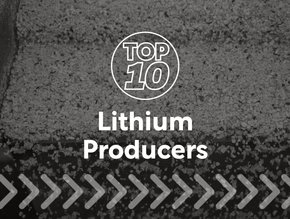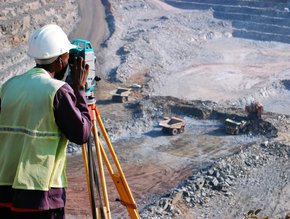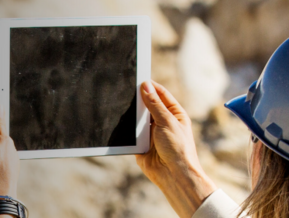Top 10 predictions for the future of mining

By 2030, the world will have progressed in ways that will not only profoundly affect all of our lives, but the way the mining industry operates. From shifting geopolitical landscapes, technological innovations, and ecological changes, to the continued rise of social awareness among consumers - drivers of change will continue to evolve.
Consulting firm Sandpit Innovation and global crowdsourcing platform Wikistrat recently partnered to run a collaborative online simulation to explore scenarios for the mining industry in 2030. Bringing together 90 experts in the fields of innovation and disruptive technologies (including contributors from BHP, Rio Tinto, South32 and Vale) they explored 70 scenarios to discover how ESG and digital factors will combine and shape the mining industry over the next decade. Here are their top ten key findings.
10: The public is the new king
None of the four Master Narratives (Glasnost, Wired, Disruption and Under Duress) described in the future of mining report from Sandpit Innovation and Wikistrat which were based on the simulation scenarios, view the role of governments as the main driver forcing the mining industry to change or impacting the market landscape in which it operates. The new normal when it comes to ESG norms will be directed and driven by the public, making it faster, less expected, and harsher.
09: Industry leaders are about to change, but not be replaced
Although disruption was perceived by most of the crowd as inevitable, it wasn’t seen as fatal. It seems that the crowd doesn’t predict a Kodak-type disruption in which an external actor with superior technology will take over the industry, but more of an Airbnb-type one, in which mining firms will learn how to live with the new competition, losing some market share, but adapting to the new reality over time. Technology is disrupting the sector with data now referred to as the ‘new oil’.
08: The Future of Work in the mining industry is outsourcing
Participants in the simulation highlighted that the trend of outsourcing mining-related operations is likely to intensify in the years to come. As a result, mining firms will seek to decentralise their organisational models, allowing higher flexibility to outsource services. Consulting firms like Accenture provide mining companies with outsourced support services in a variety of commercial and IT areas.
07: Artificial Intelligence as a commodity
Several scenarios explored the possibility of advanced digital technologies such as AI becoming a platform to raise capital and achieve higher valuations from investors. As a result, these capabilities will become a high-end commodity evaluated not only by its operational benefit but also the financial one. AI solutions, like those from Minerva Intelligence available on the Oren Marketplace launched by Shell and IBM, are already bringing new levels of capability to the geological processes across the industry
06: Transparency is already the New Normal
The complex dynamics of the four Master Narratives (Glasnost, Wired, Disruption and Under Duress) described in the future of mining report from Sandpit Innovation and Wikistrat highlight the urgent need for mining executives to adopt new norms in which transparency and information sharing with the public are not avoided but promoted to gain public support which will be in decline in the years to come.
05: Local communities are the new partners
All the scenarios have clearly shown that in the upcoming decade, local communities are going to be at the centre of the strategic planning of new and existing mines. As a result, mining firms will be required – by their employees, investors, and the public – to include these communities in the decision-making process and to share profits with them. A recent example of this approach is AngloGold Ashanti’s life after mine planning at the Quebradona copper-gold project in Colombia.
04: Digital Experimentation equals wide adoption
The crowd provided various examples of how the mining industry is already experimenting with digital technologies to achieve better ESG ratings. Rio Tinto is using Palantir to improve its decision making process, Anglo American and De Beers are using blockchain to track high-value diamonds from miner to retailer using blockchain, and BHP is using IoT technologies to increase mine safety. The industry giants are already investing in applying and experimenting with digital technologies, yet these are still specific cases and not yet a wider adoption.
03: Leveraging Transparency
The ability of some mining firms to provide information on the mining process will open new markets and a wider price range to sell their commodities. Various scenarios in the simulation explored the use and application of blockchain technology for this purpose, and to improve the trading process between buyers and sellers. Mining giant BHP is exploring the use of blockchain for its iron ore sales.
02: Remote work is only a means to an end
During the simulation, the various scenarios explored how disruptive technologies will promote remote working in mines. Yet it was clear that promoting remote work is a step to a greater goal, complete automatization of mining operations which in return lead to processes that are shaped and managed by data collected and easier to customise. The quest for operational excellence through digital transformation is already a focus for mining majors like Newmont seeking to improve safety, reduce costs and support sustainability.
“Blasting, drilling, hauling, the processes at mills – all aspect of mining will become increasingly automated over the next 10 years.”
Luis Canepari, CIO, Newmont
01: Electric Vehicles are changing the game
Mobility’s shift away from fossil fuels will put consumers in a place where they shape and dictate the relations between manufacturers and the suppliers of raw materials. As a result, the pressure on the mining industry to change the way minerals are extracted will be a new normal that executives in the mining industry must adjust to and adopt as early as possible. The spike in electric vehicle sales is already ramping the prices of the metals vital to their creation – copper, cobalt, nickel and more. The origin of these resources, and the environmental impact that building each car has, will be a trend that will also impact the price of resources.
“We’re seeing companies like Tesla reach back down the supply chain to set up off-take agreements with mining companies directly.”
Dr Alan Bye, Director of Digital Value Chains at Curtin University and founder of Imvelo






